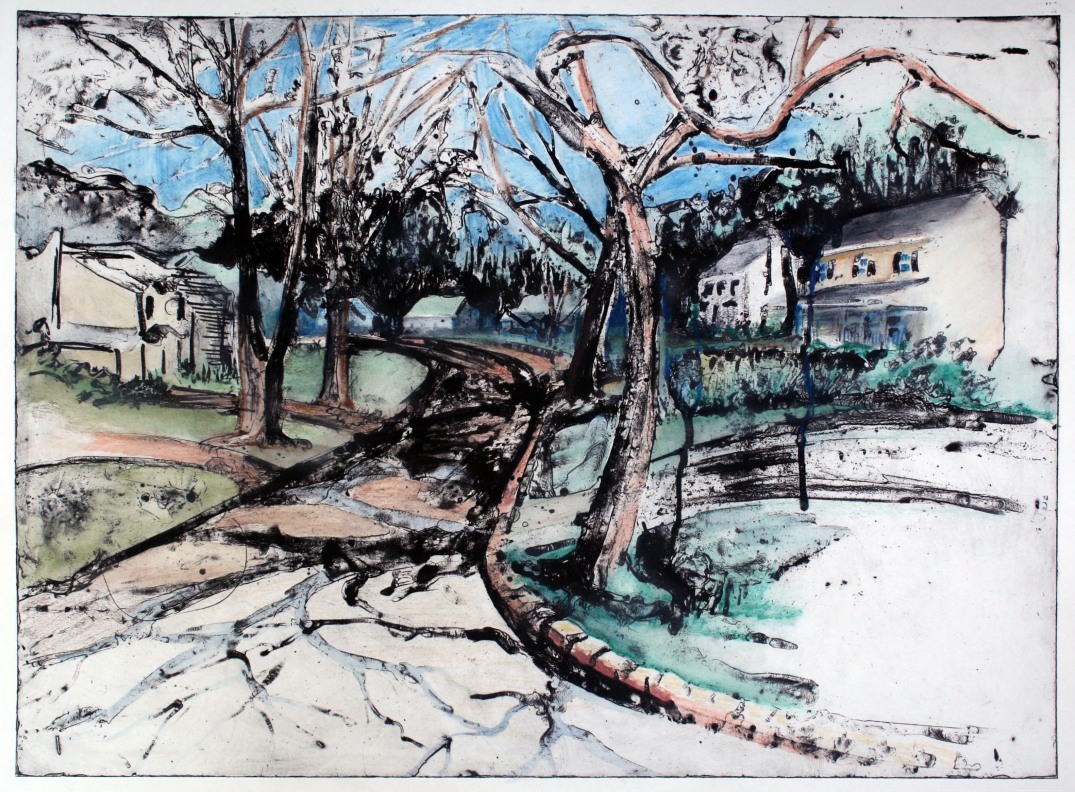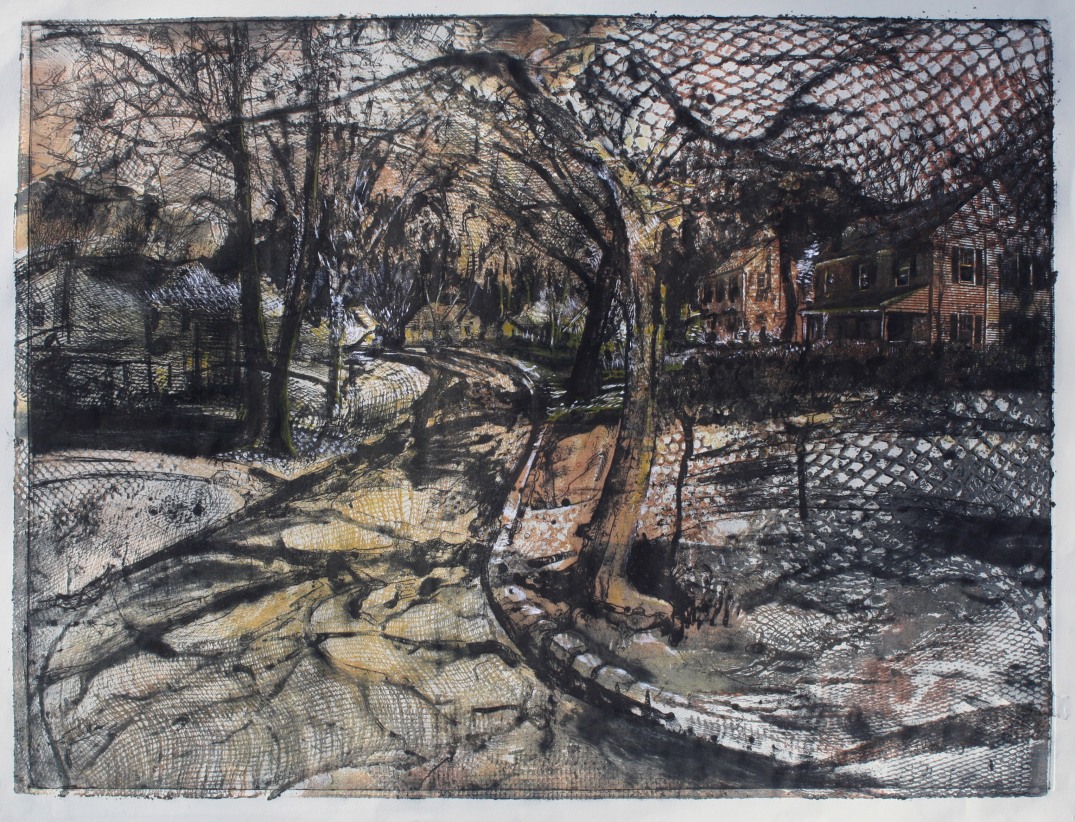Hi Line is a woodcut layered with three photo-intaglios, 24”x18” on cotton rag paper
Category: collagraph
Passages

My graduate thesis focused on combining various printmaking mediums, by layering the prints, and incorporating digitally-manipulated photographs. The image above, of Holmes Oval, began as a tucshe ink wash painting on mylar, that was exposed onto a photo-sensitive plate, to be inked and printed as the first layer. However, the photo process had washed out the light textures and so I added pastels to give it the depth it needed.
It was about this time that I had begun experimenting with collagraphs and I decided to create a collagraph of Holmes Oval and try printing the tusche wash intaglio on top of the collagraph. The resulting print is below, which actually became quite ominous, with the netting in the sky and the woven threads of fabric moving across the street and lawns. The trees also take on a tangled web of threads and the houses are in the deep shadows of textured surfaces below. This is a monoprint, due to the changing nature of the fabric surfaces and the inconsistent wiping of various colors in the collagraph layer.
The third image in this post is “Sixth Avenue” which began as a woodcut, on which I glued fabrics and netting again. But this time, I took a photo of the first print of the collagraph, and then subtracted the textures from a photograph of Sixth Avenue. The result is a relationship between the two images, which are now layered on top of each other.


- Sixth Avenue, 18″x 24″ 2 plates: collagraph and PhotoIntaglio
Granada Boulevard, combining collagraph and intaglio printmaking techniques

This 20″ x 16″ print is a mixed-media layering of three printings from two plates. The first matrix/plate was a collagraph on masonite(carving of buildings and covered with lace, acrylic gel, and gauze), first wiped with black ink and then rolled with off-white ink as a block print on top. The third layer was from another plate, a photo intaglio plate with the details of the building windows, that is wiped with black ink and printed on top.